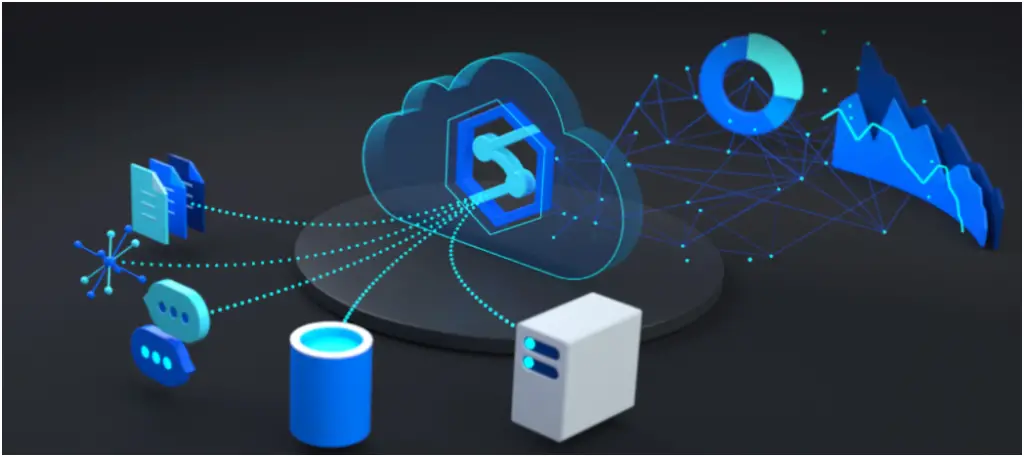What are the big data analytics options in azure
Raw data is irrelevant. It is the big data analysis process which transforms meaningless datasets into actionable insights. The basis of data-driven decisions is big data analytics, which helps companies to avoid guesses and optimistic instincts.
You need to set up an analysis process before you can turn the raw data into insights. A different approach is merited by each initiative. You can use a combination of a data warehouse based on the cloud with a compatible research service. Alternatively, with private clouds, you can combine managed services. Or you can set up a hybrid operation of your own.
Data comes in all forms and formats of all kinds. We apply to vast quantities of data when we speak about big data. Information is obtained from the GPS sensors in this Tailwind Traders scenario, which includes position information, weather system data, and several other sources that produce large quantities of data. It is becoming increasingly difficult to make sense of and to base decisions on this volume of data. The volumes are so high that conventional processing and analysis forms are no longer suitable.
To try to cope with these massive datasets, open-source cluster technologies have been developed over time. A wide variety of technologies and services are provided by Microsoft Azure to provide big data and analytical solutions, including Azure Synapse Analytics, Azure HDInsight, Azure Databricks, and Azure Data Lake Analytics.
- Azure Synapse Analytics
Azure Synapse Analytics (formerly Azure SQL Data Warehouse) is a limitless analytics infrastructure that incorporates warehousing of business data and analytics for big data. By using either serverless or provisioned assets at scale, you can query data on your terms. In order to absorb, plan, handle, and serve data for immediate BI and machine learning needs, you have a single experience.

- Azure HDInsight
Azure HDInsight for companies is a professionally operated, open-source analytics program. It’s a cloud service that makes processing large quantities of data simpler, quicker, and more cost-effective. You can run common open source frameworks, such as Apache Spark, Apache Hadoop, Apache Kafka, Apache HBase, Apache Storm, and Machine Learning Services, and build cluster forms. A wide range of scenarios, such as extraction, transformation, and loading (ETL), data warehousing, machine learning, and IoT, are also supported by HDInsight.

- Azure Databricks

Azure Databricks helps you unlock ideas from all your knowledge and develop solutions for artificial intelligence. You can set up your Apache Spark environment in minutes, then auto-scale and collaborate in an open workspace on shared projects. As well as data science frameworks and libraries such as TensorFlow, PyTorch, and scikit-learn, Azure Databricks supports Python, Scala, R, Java, and SQL.
- Azure Data Lake Analytics

Azure Data Lake Analytics is a job analytics service on demand that simplifies big data. You write queries to convert your data and gain useful insights instead of installing, setting, and tuning hardware. By setting the dial for how much power you need, the analytics service can handle jobs of any size instantly. When you’re running, you just pay for your work, making it more cost-effective.
The Extract Transform Load (ETL) operation is an Azure Data Factory. ETL is a concept from the old days of processing organized data on a wide scale. An ETL framework takes a standardized database, cleans it, and transforms the information into a format that is acceptable for research. Data Factory allows you to use a visual editor to create ETL and also Extract Load Transform (ELT) strategies without code or configuration.
With over 90 data sources, including Amazon S3, google Big Query, and many on-site data sources, the Data Factory offers built-in connectors. You can also copy the data to Azure File Storage from the Data Factory.
- Azure Machine Learning
This is a massive library of pre-packaged, pre-trained algorithms for machine learning. It also provides an atmosphere for the consumption of these algorithms and their application to tasks in the real world. With a convenient machine learning UI that allows you to create machine learning pipelines combining multiple algorithms, with steps such as model training, testing, and evaluation, Azure ML speeds up model development.
Furthermore, Azure ML offers solutions for interpretable AI. It requires visualization and other details that can help to understand the behavior of the model, apply fairness metrics, and make algorithm comparisons to understand the best variant to select.
- Azure Stream Analytics
Using a number of languages, including U-SQL (a special language offered by Microsoft that combines the advantages of SQL and C#), Python, .NET, and R., Azure Data Lake Analytics helps you to create data transformation programs It can process data petabytes.
Data Lake Analytics varies from Azure Synapse Analytics in that it does not pull and then process all the data into a data lake. Instead, it links to Azure-based data sources, such as Azure Data Lake Storage, and uses code you provide to conduct on-the-fly analytics
- Azure Analysis Services
You can use the Azure Resource Manager to set up Azure Analysis Services, which integrates data from different sources and generates one trustworthy semantic model. This enables you to build high-performance BI solutions with safe access and quick delivery time. Based on the analytical workload, it scales up and down, and you pay only for the services you use.
You may also import existing models or tabular models of SQL Server 2016 with Review Services.

